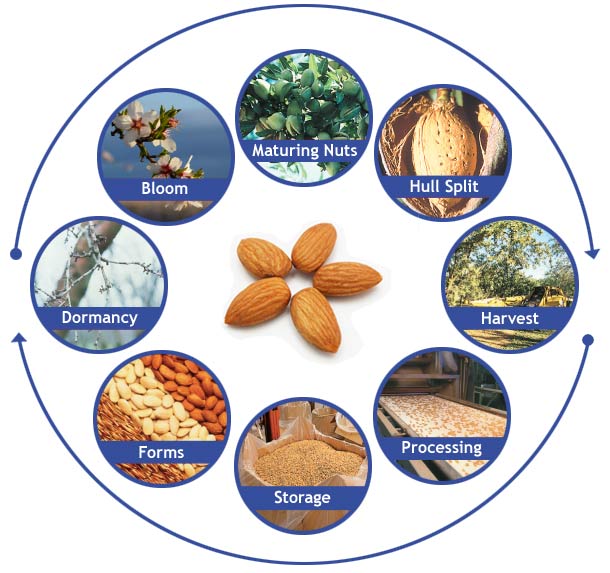CNN
- American Flag: View this website in its original English
- Saudi Arabian Flag: View this website in Arabic with Google Translate
- German Flag: View this website in German with Google Translate
- Japanese Flag: View this website in Japanese with Google Translate
- Chinese Flag: View this website in Chinese with Google Translate
- French Flag: View this website in French with Google Translate
- Spanish Flag: View this website in Spanish with Google Translate
Almond Lifecycle

Like nectarines, peaches, and plums, the almond is categorized botanically as a fruit. Almonds are classified as either sweet (Amygdalus communis L. var. dulcis) or bitter (Amygdalus communis L. var. amara), but only sweet are grown in California.
Almonds grow on trees that bloom from mid-February through March. These trees are not self-pollinating, so bees have an important role. For the trees to produce, at least two different almond varieties must be planted in alternating rows.
Almonds develop in a shell that is surrounded by a hull (analogous to the fleshy part of a peach). Over the summer, as the nuts mature, the hull dries and splits open, revealing a shell that encases the nut. The nuts dry naturally in this shell before they are harvested.
Between mid-August and October, almonds are harvested by mechanical tree “shakers,” which knock the almonds, still in their hulls, to the ground. The nuts are then gathered and delivered for processing, where the next stage of cleaning and grading occurs. Finally, they’re sold to thousands of customers around the world.
Source: Almond Board of California
![]()